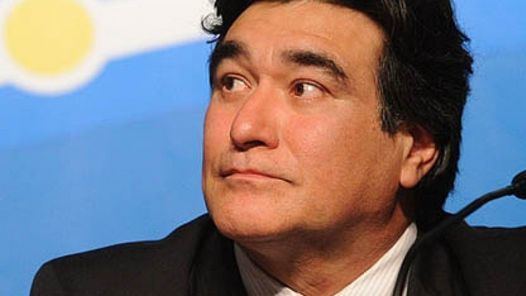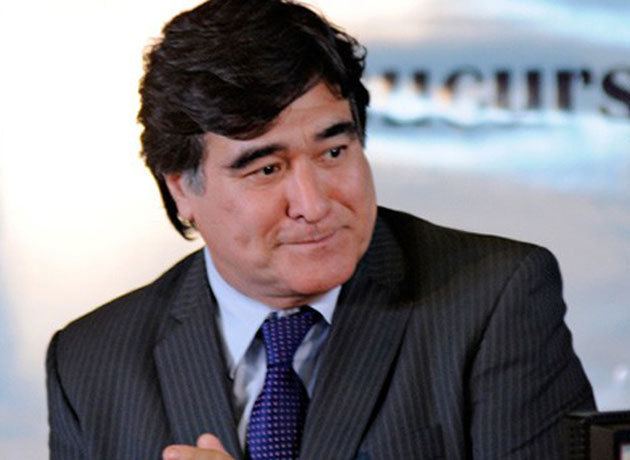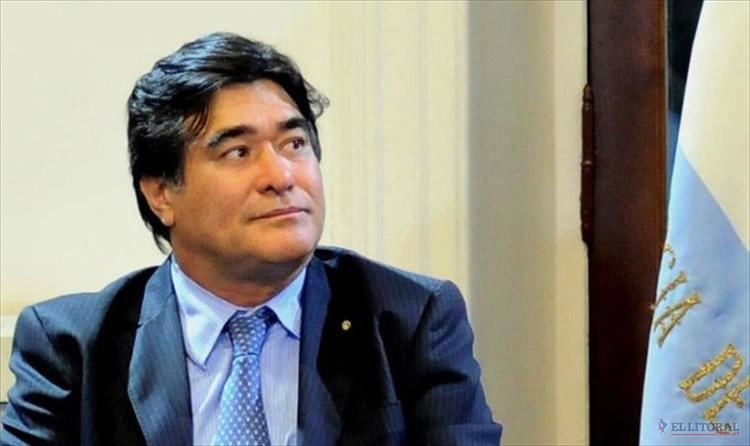Preceded by Antonio Arcuri Spouse Patricia Alsua Role Politician | Name Carlos Zannini Nationality Argentine | |
 | ||
President Nestor Kirchner (2003-07)Cristina Fernandez de Kirchner (since 2007) Alma mater National University of Cordoba Education National University of Cordoba Similar People Daniel Scioli, Mauricio Macri, Cristina Fernandez de Kirchner, Anibal Fernandez, Gabriela Michetti | ||
Carlos zannini en animales sueltos fantino hd 13 11 2015
Alberto Carlos Zannini (born August 27, 1954 in Villa Nueva, Córdoba, Argentina) is an Argentine lawyer and politician. He has been the Legal and Technical Secretary for President Cristina Fernández de Kirchner since 2003.
Contents
- Carlos zannini en animales sueltos fantino hd 13 11 2015
- C5N Minuto Uno Entrevista a Carlos Zannini
- Early life
- Political career
- Relationship to the Kirchners
- Bond dispute
- Allegations of corruption
- Personal life
- References

Zannini has been described as “one of Kirchner’s most trusted men” and as “the power behind the President.” It has been said that his key attribute is his ability “to interpret the decisions of Cristina Kirchner” and to take “the political decisions of Néstor and Cristina Kirchner throughout the ‘winning decade’ and translated them into decrees, resolutions, and bills.”

He is nicknamed “El Chino” (The Chinese) because of “his admiration during his youth for the policies of Mao Tse-Tung in the People's Republic of China.”

C5N - Minuto Uno: Entrevista a Carlos Zannini
Early life
Zannini was born in the small town of Villa Nueva, in eastern Córdoba Province. His father was a bricklayer and his mother was a housewife. In his childhood he was a serious tennis player.
He began to be active in politics in the 1970s, with the rise to power of Campora and the third presidency of Juan Perón. He considered himself a Maoist and belonged to a Maoist group called the Communist Vanguard.
After the 1976 coup because of his membership in the Communist Vanguard, Zannini was arrested and held in the prison of La Plata for four years. Eventually he was released and completed law school. In 1982, Zannini organized “the Peronist boys” in El Carmen.
He was invited by a friend, Roberto Arizmendi, to move to Río Gallegos. There he met Néstor Kirchner in 1984, who was then an emerging politician and lawyer, and Cristina Fernández.
Political career
Zannini held various positions within the civil service, mostly in the province of Santa Cruz, and invariably at the right hand of Kirchner.
In 1987 he was appointed Secretary of Municipal Government in Rio Gallegos. When Kirchner was elected governor in 1991, Zannini was appointed Minister of the Interior of the province. When Cristina Fernández resigned from the provincial legislature to join the National Congress, Zannini was elected to replace her. In 1999 he was appointed by Kirchner as president of the Superior Court of Santa Cruz.
He has been described as the “architect of two constitutional reforms in the Patagonian province,” one of which, in 1994, enabled Néstor Kirchner to run for a second term as governor of Santa Cruz, and the second of which, in 1998, established term limits and eliminated the consanguinity clause. He also implemented the “voting system that assures the ruling party an overwhelming majority in the provincial legislature.” One source states that his greatest achievement was a 1995 law expanding the Provincial Court from three to five members, giving Kirchner an "automatic majority."
On May 25, 2003 Zannini was appointed the Legal and Technical Secretary of the Presidency of Argentina by President Néstor Kirchner. He was confirmed in this position in 2007 and 2011 by President Cristina Fernández. His office is “on the ground floor of the State House, behind the Patio de las Palmeras.” He “has a direct relationship with the president of the Supreme Court of Justice Ricardo Lorenzetti,” and this friendship has been key to the progress of judicial reform in the national legislature.
Zannini also directs the Kirchnerist youth organization, La Cámpora. He has been described as the man who runs this group “from the shadows,” while it is nominally run by Máximo Kirchner, says Laura Di Marco in her book about La Campora.
Relationship to the Kirchners
Zannini has been described as having been a Kirchnerite from the very beginning and as having “never left” the fold. “First at the local level of Rio Gallegos, then in the provincial government and finally as president,” writes one source, “Nestor Kirchner was always flanked by Zannini, the man who drafted speeches, decrees, bills and, above all, telling him where and when or not to sign it.” Zannini has told both Kirchners “what to veto, whom to appoint to key positions,” and so on. Nothing happens in the government “without his permission and supervision.”
He was described in October 2013 as “the strong man, the real power behind the scenes,” the “power in the shadows,” the "juridical architect of Kirchnerism,” the “custodian of the presidential signature and ideological guardian of the K project,” “the brain of judicial reform,” and “the most powerful functionary in the government.”
It has been surmised that his strength lies not in his influence on the President’s decisions but in his ability to interpret the President’s wishes. Although it is Vice President Amado Boudou who formally replaces the president when she is ill, Zannini has been described as being the real seat of power in her absence. Buenos Aires Province Governor Daniel Scioli, the front runner in the Kirchnerist Front for Victory primary for the nomination, named Zannini as his running mate in his campaign for the 2015 presidential election.
Zannini has also been described as being perhaps the one person most responsible for “the progress that has been made in building the Kirchner model.” He has allegedly succeeded in “cornering power” through methods drawn from Antonio Gramsci which “are much more effective than the armed struggle” that he and others engaged in during the 1970s.
Bond dispute
Zannini said on July 27, 2014, at the third meeting of a group called the Kirchner Militancy, that the concept of default was “not applicable" to the judicial proceedings involving Argentina and persons holding Argentinian bonds, whom he described as members of the “international scab financial system.” Zannini rejected the decision of a U.S. judge who ordered Argentina to pay its creditors, calling the creditors “vultures” and “pirates.” He also criticized the judge, who, he said, “seemed to have understood nothing” and “did not understand that this is a sovereign country that has to respect the constitution.” While he insisted that Argentina would pay its debts, he added that Cristina Kirchner would “not sign anything that could bring hunger to Argentines and will continue negotiations to prevent damage occurring to the people.” Griesa's decision was similarly rejected by the Organization of American States, the G-77 (133 nations), and the Council on Foreign Relations, as well as by bondholders whose payments were stopped by the Griesa court.
Allegations of corruption
Zannini was accused in 2012 of 38 counts of embezzlement, fraud, and other forms of corruption. However, the case was suspended for a time and has faced several roadblocks put up by members of the presidential cabinet and government. The case has been pushed by Judge Norberto Oyarbide who has faced constant setbacks. For instance, when he ordered a raid on Zannini's property to gather evidence, Carlos Liuzzi, a presidential secretary, called him and ordered him to cancel the raid..
Zannini's wealth reportedly increased from 190,000 pesos to over 7 million from 2003 to 2011. During this time, he was supposedly only receiving a small civil servant's salary .
Personal life
He is the father of four children from two marriages. His first wife died in 1986, a few months after the birth of her second child. He is married to Patricia Alsúa, an attorney with whom he had two children.
